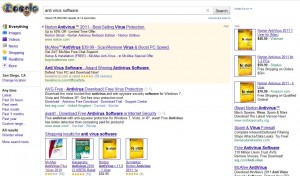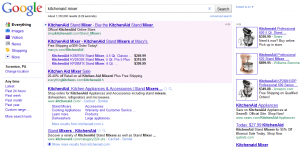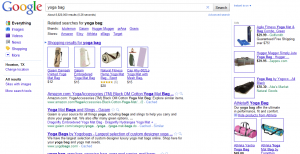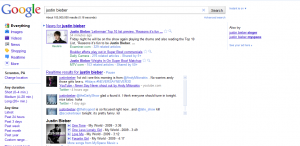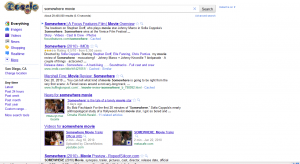Today, I’ll present on the “SEO vs. Paid search: Balancing the two to raise the total tide” panel at the Online Marketing Summit. Along with Jamie Smith of Engine Ready, I’m representing the PPC side of the table with SEO heavyweights Chris Boggs of Rosetta (and President of SEMPO) and Rand Fishkin of SEOMoz on the organic side.
It’s a well covered topic and we on the panel all agreed that an “either/or” argument was too cliché. Let me suggest there are 3 fundamental things that form the basis of any PPC + SEO discussion:
- Everyone should be building search engine friendly websites and, as their resources allow, doing SEO in its proper form (content development, research, link building, etc.)
- Most businesses will find paid search to be a profitable way to acquire customers, because of the high degree of intent from searchers and the ability to target, value and satisfy that intent on a granular basis. A simple pilot to measure incremental profit from the channel will tell you.
- Having an organic listing when you have a paid list is probably a good thing. Having a paid listing when you have an organic listing may be a good thing. Your mileage may vary and there are ways to test and measure if you don’t trust people who have done it before.
My focus is on one trend that is changing the nature of the search engine results pages (SERPs): the shift in the balance between paid and unpaid listings.
Consider this search for “anti virus software” as an example*:
Paid search ads dominate the search results. In fact, the only organic listings you can see are AVG and avast! (I’m counting the Shopping results as ads).
The total number of possible ads hasn’t changed. Given adequate advertiser interest, bids, ad quality and the commercial intent of the search, ads could always fill the top 3 slots (aka premium position) and the right column.
What has changed is the space taken up by, and visual dominance of, the ads in several ways:
- Most notably, there are now display ads in the SERPs. Google’s Product Listing Ads show product images on the top 3 positions in the right column.
- As of last week, ads are now showing longer titles that pull in the first description line, mimicking the title tag of organic listings
- Most ads in the premium position will show site links, effectively adding another line and 4 more calls-to-action to the ads
- Retailers with an sufficiently high number of positive ratings will get a call out with stars and the number of reviews, distinguishing the ads again and contributing yet another line to the text ad
- The background of the ads has switched to pink. Personally, I find this harder to distinguish vs. white than the previous yellow and blue incarnations.
This is the most dramatic example, but we see it in other searches as well:
“kitchenaid mixer”
I have always thought of Google as a publisher and each search results page simply as content they need to monetize. These changes are similar to a news site stacking on more ad slots or increasing the size of their ads.
But, where a traditional publisher’s ads don’t really compete with the content, Google’s ads do. Paid search ads may now draw attention away from organic listings and push natural results further down the page.
In essence, paid listings may be getting clicks at the expense of organic listings at an increasing rate.
At the very least, it puts more pressure to be among the top organic listings as they lose prominence in the results. It also adds important context for your SEO analysis, essentially a new set of competitors with new tactics.
On the flip side, paid search ads now offer an increasing number of ways to advertise in the SERPs. There are more levers to pull, formats to try and offers and messages to test. If you’re weak in the organic listings, these new controls may give you an edge.
One final note: not every industry will be affected by these changes equally. In some cases, there are few, if any, paid competitors. For example, media and entertainment searches such as “justin bieber” or “somewhere movie” are dominated by video, image, news, and real time results among the usual organic listings.
*Screenshots are from my Dell D620 laptop. Your experience may look different based on screen size and personalization of search results.

